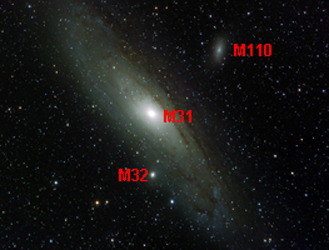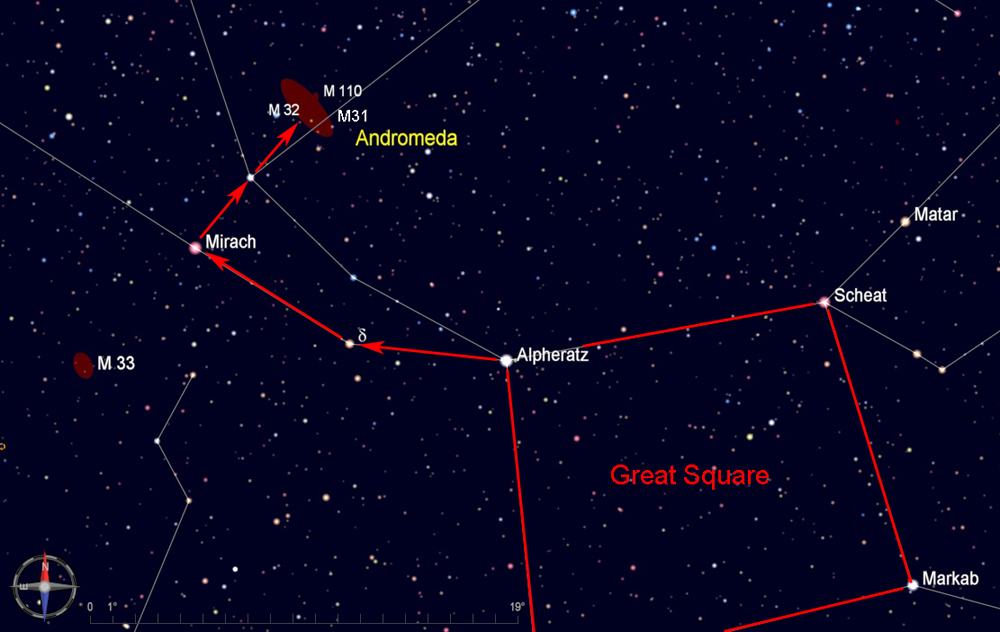
Start by finding the Great Square of Pegasus, which rises in the eastern sky during the early fall evenings, is high overhead later in the fall, and sinks in the western sky during early winter. To be sure you know how the square is oriented in the sky, look for the two stars outside the northwest corner of the square (circled in the chart below) that form a small triangle with Scheat.

The constellation Andromeda stretches to the northeast from the Great Square, starting at the second-magnitude star Alpheratz. Using the naked eye, look to the east of Alpheratz for the star delta (δ) Andromedae, then move on to the brighter star Mirach. Take a right turn at Mirach to a slightly dimmer star, and then move that same distance again to reach the position of the Andromeda galaxy. If the sky is dark, the galaxy will be visible to the naked eye as an oval smudge of light. If not, it should be easy to see through binoculars.
